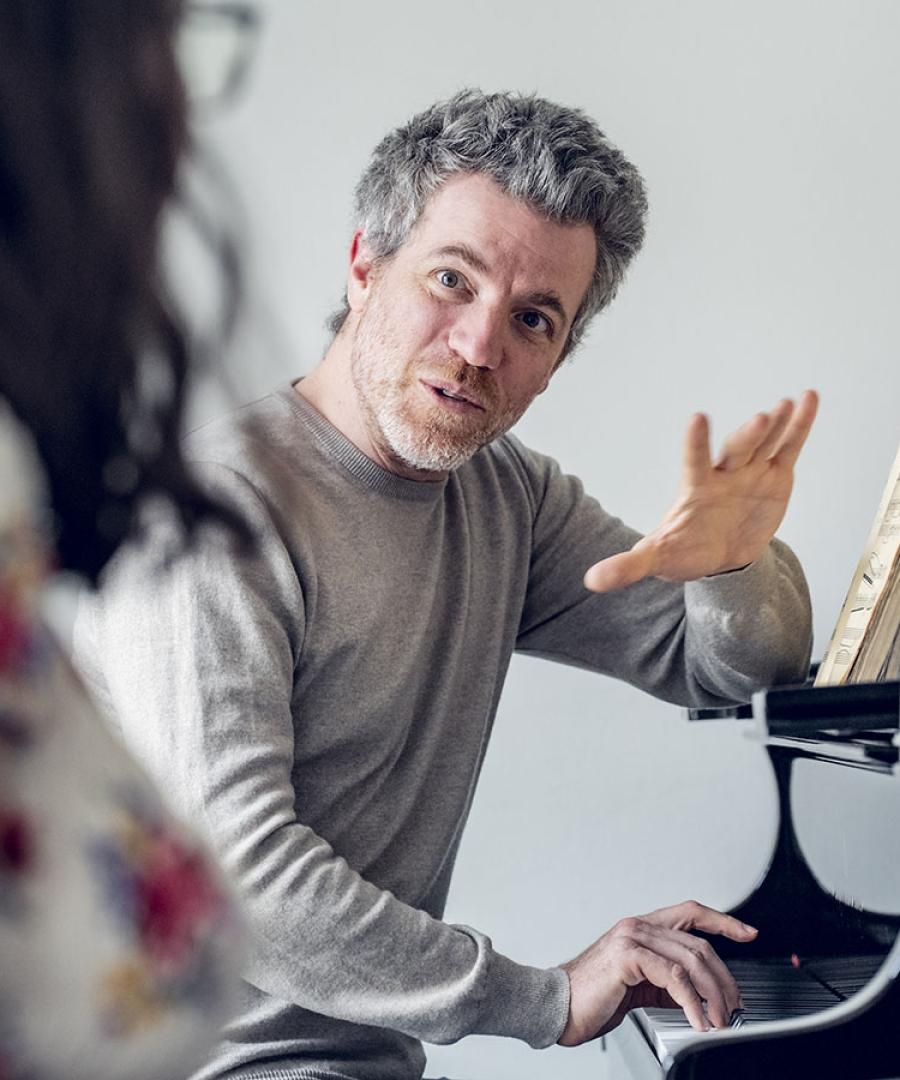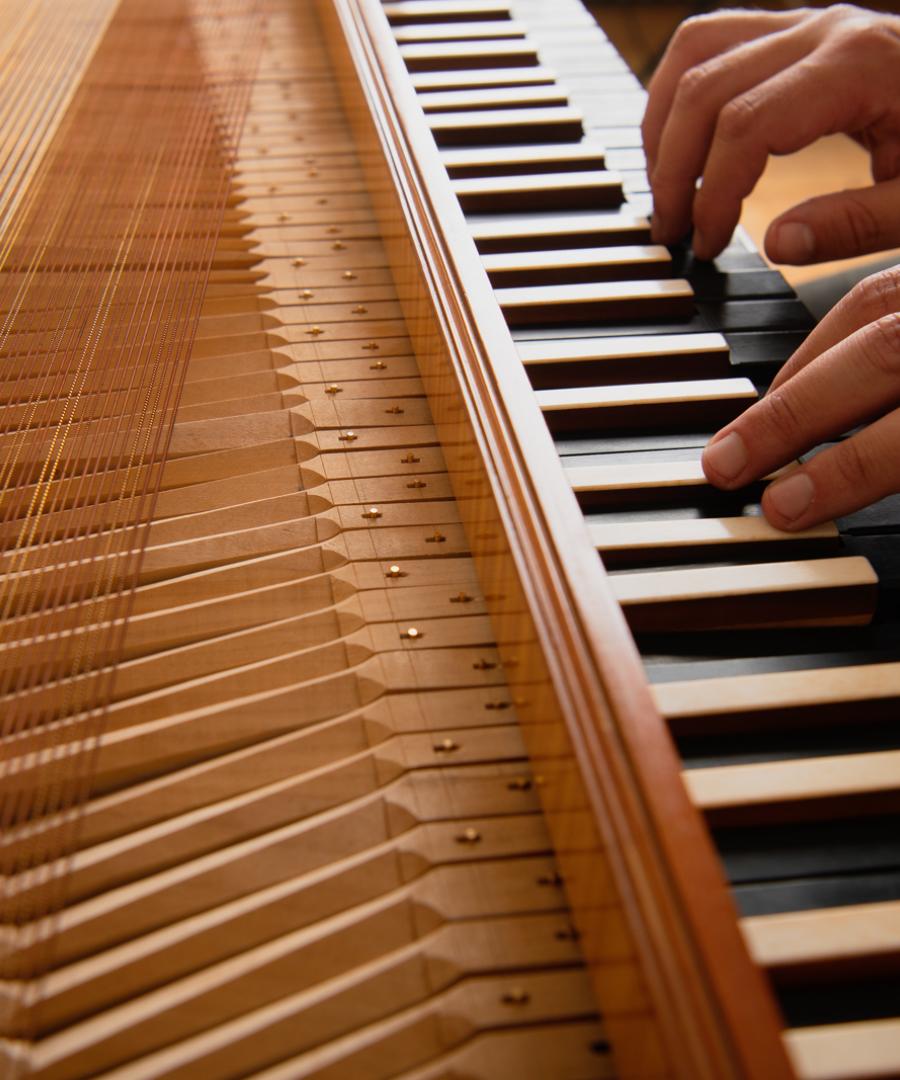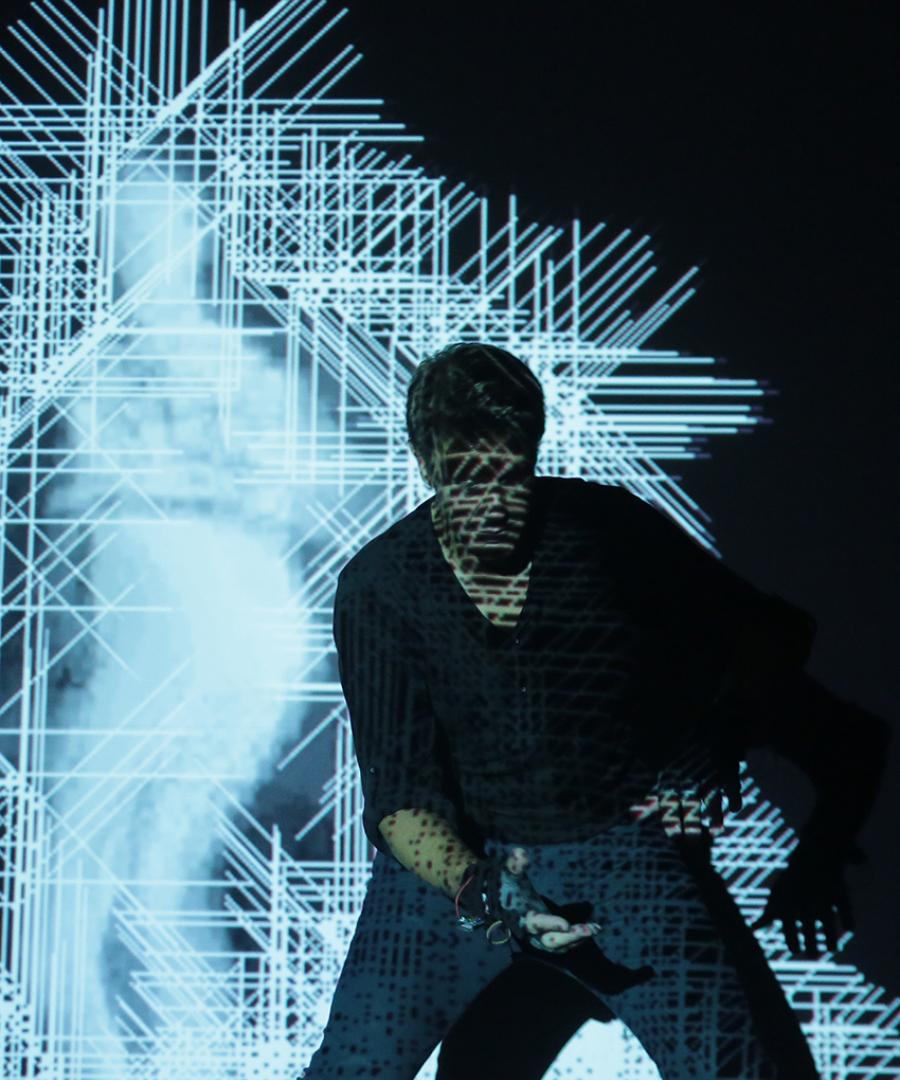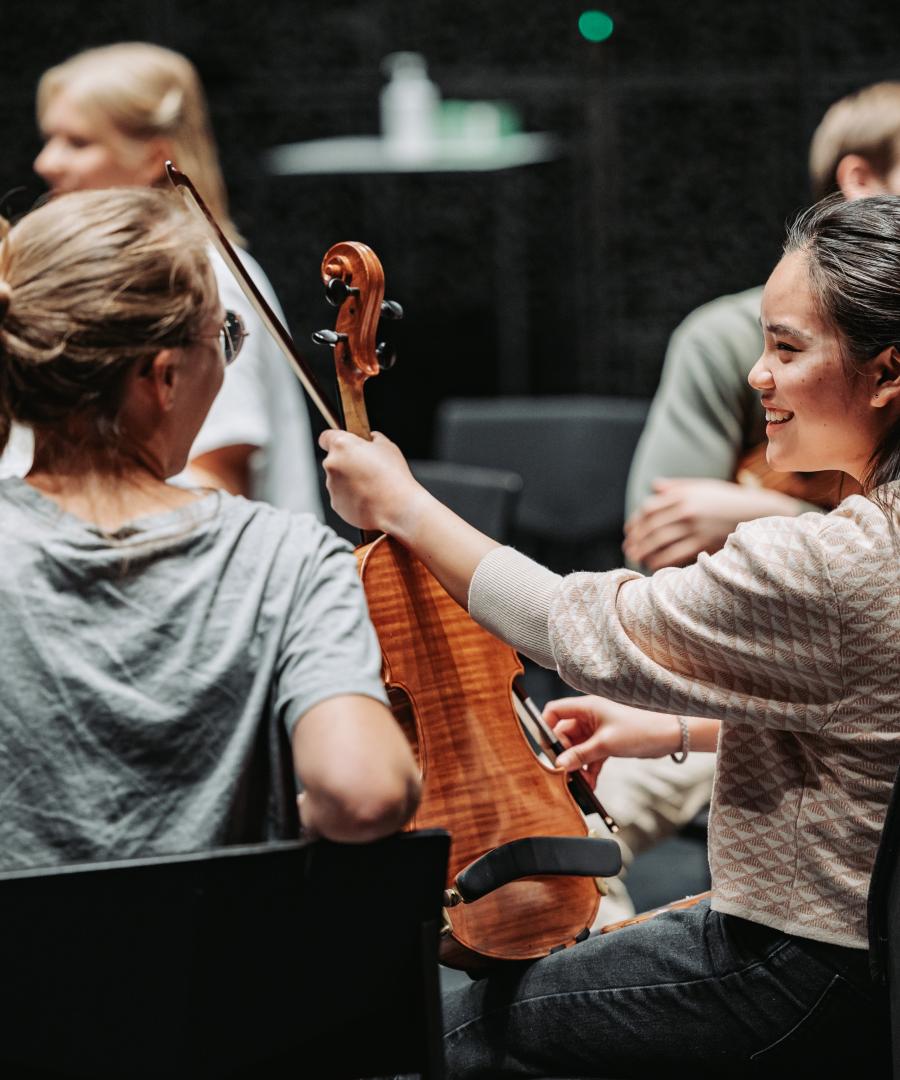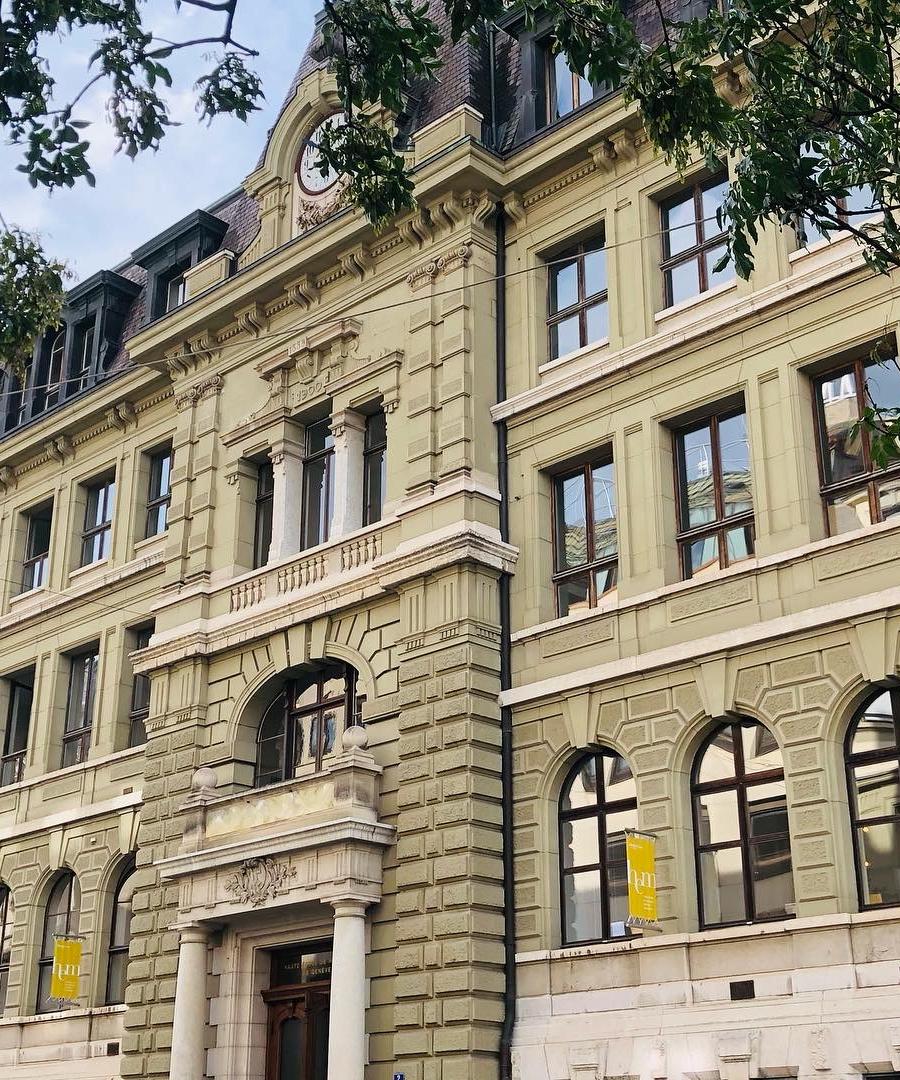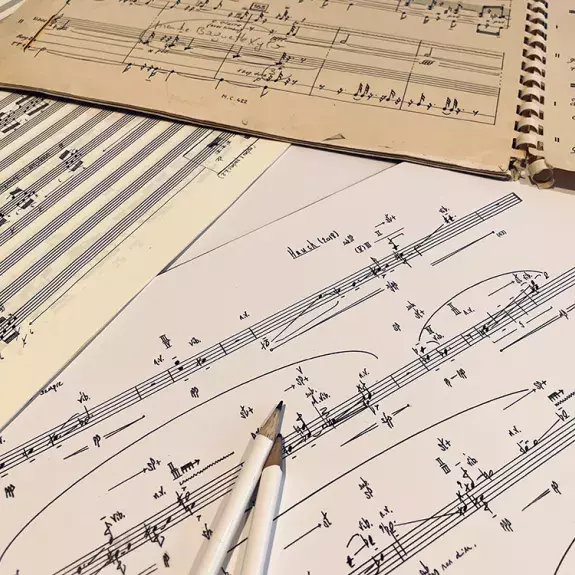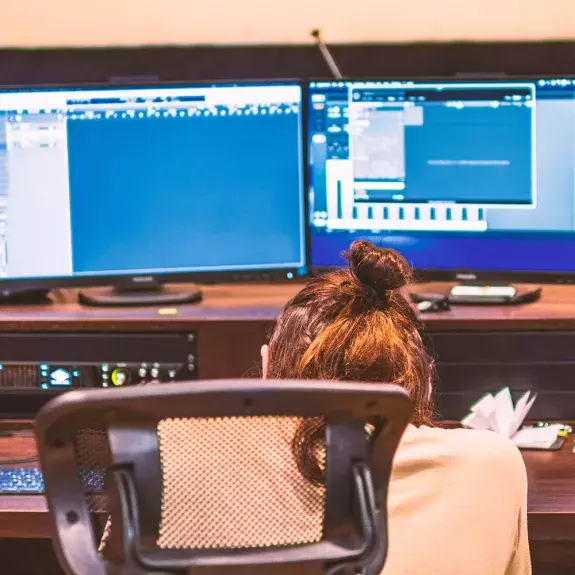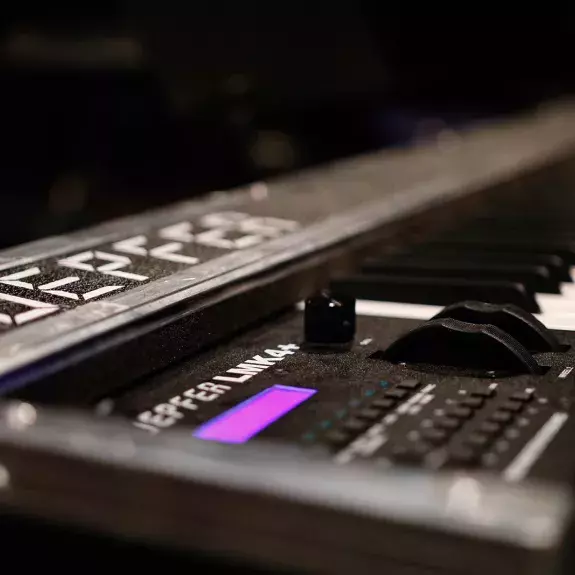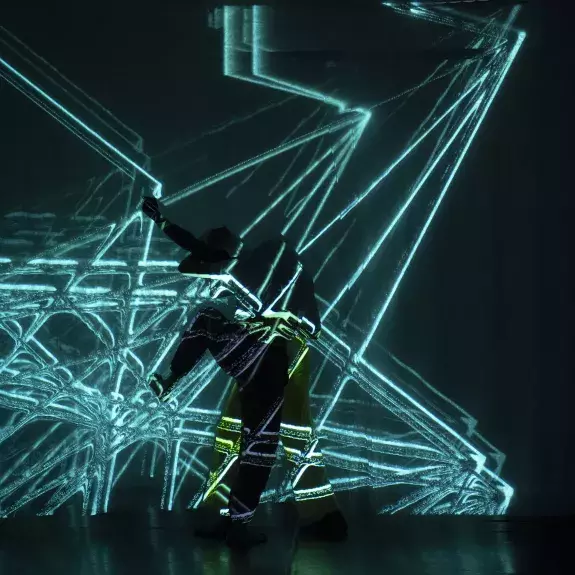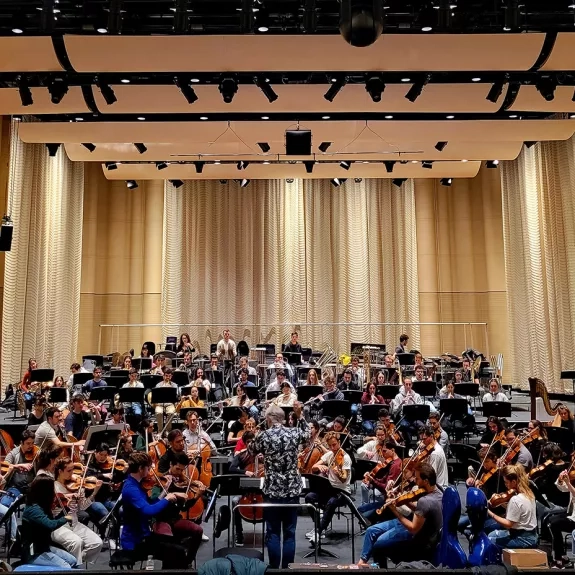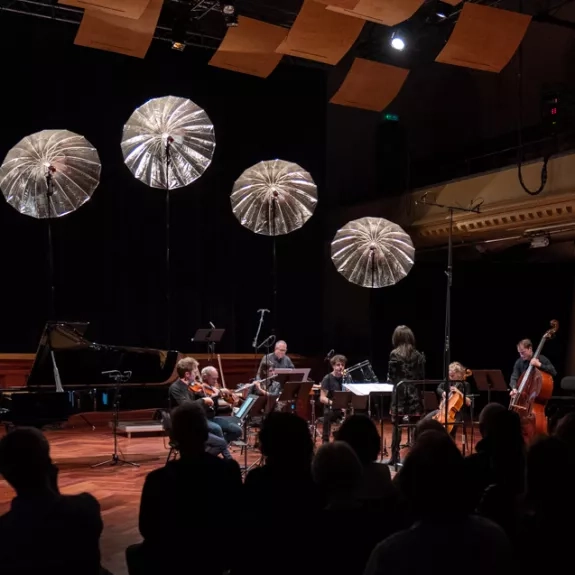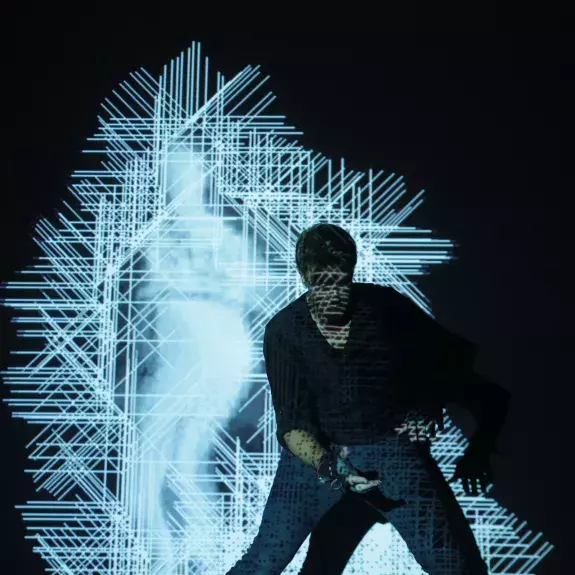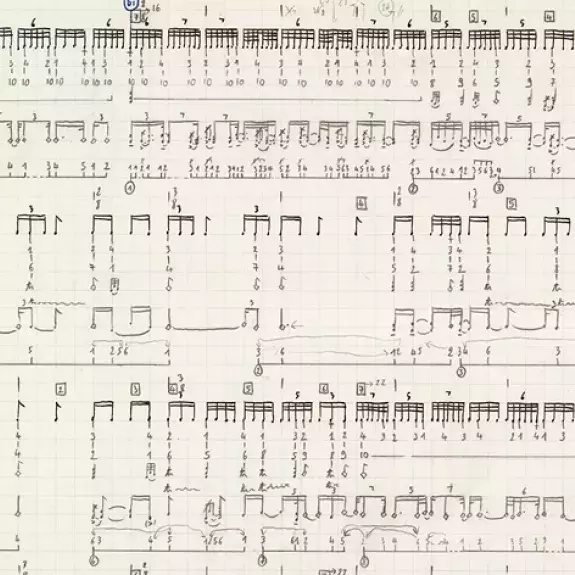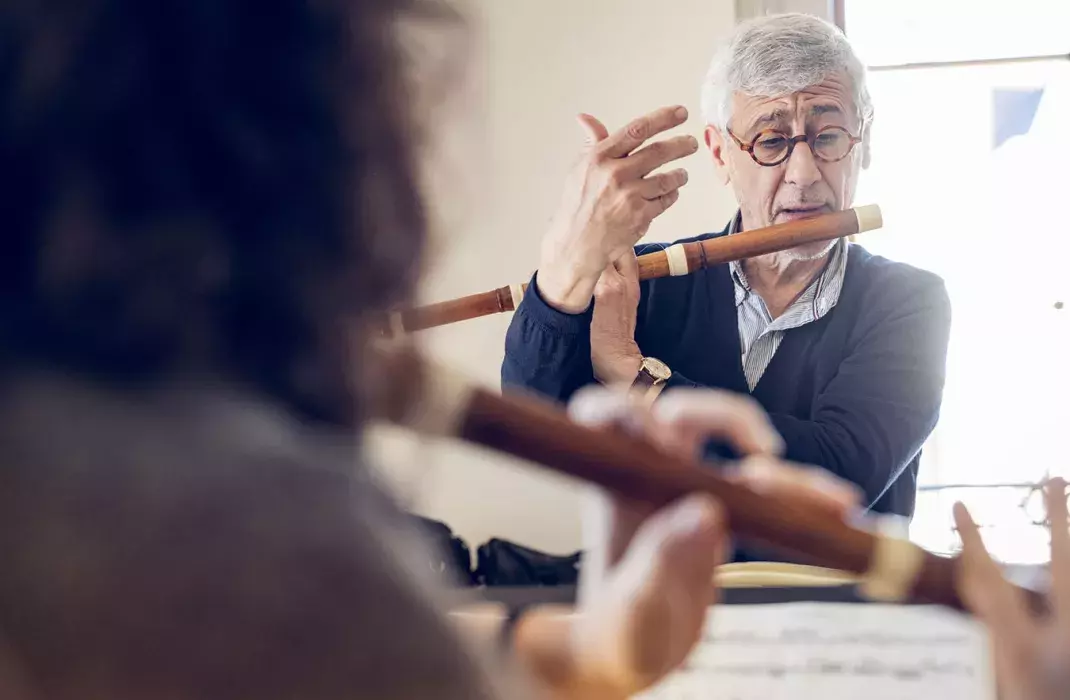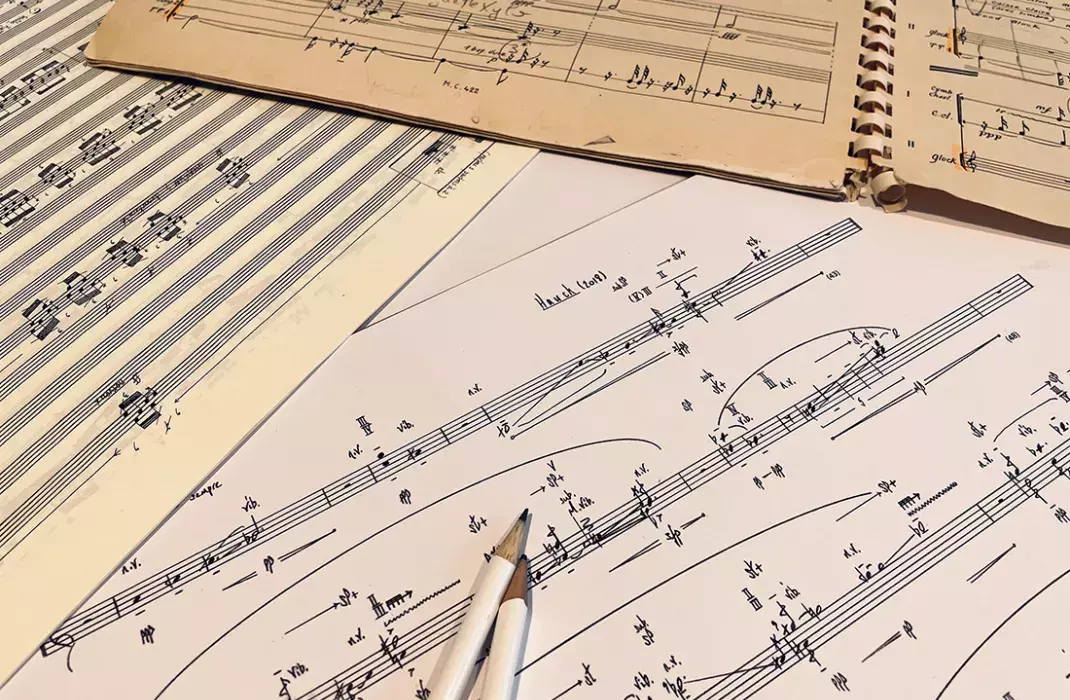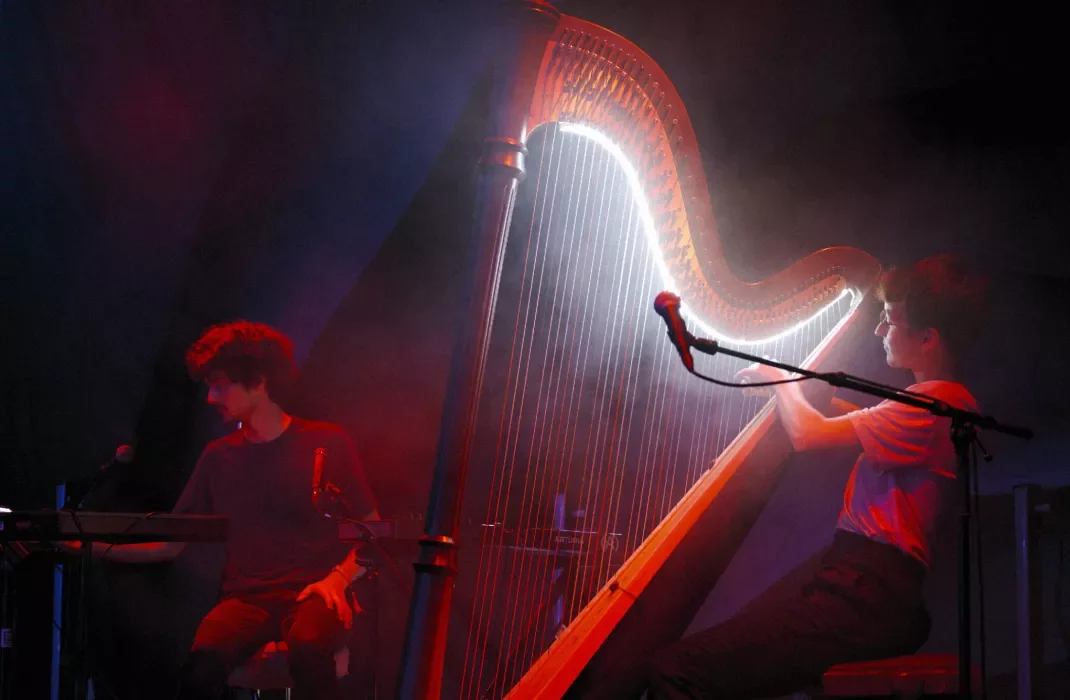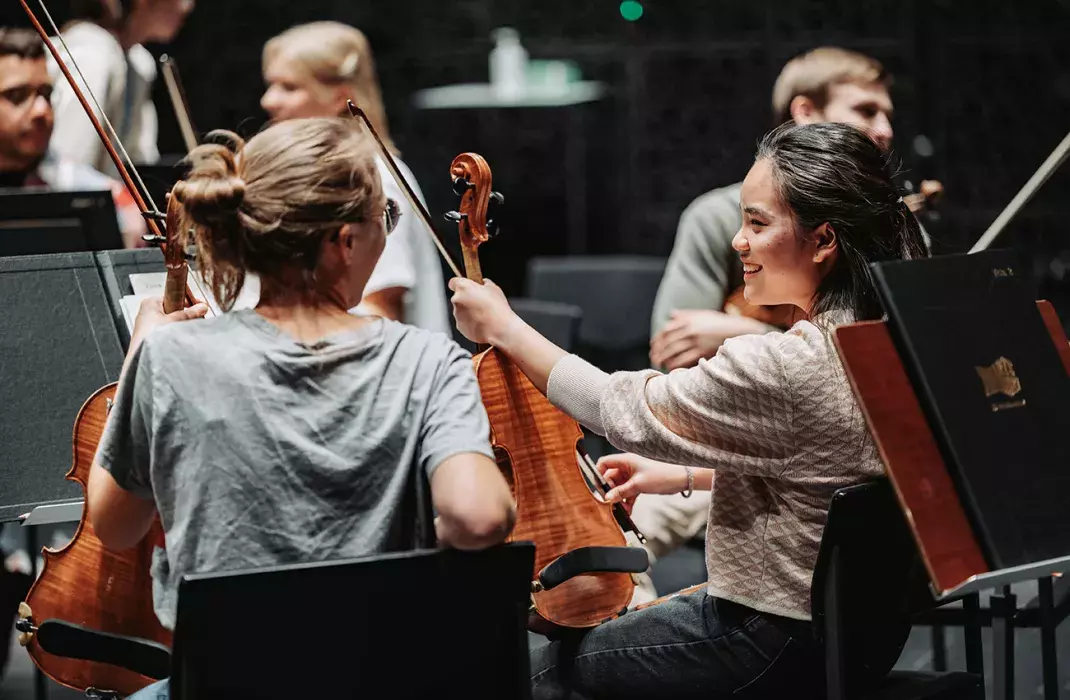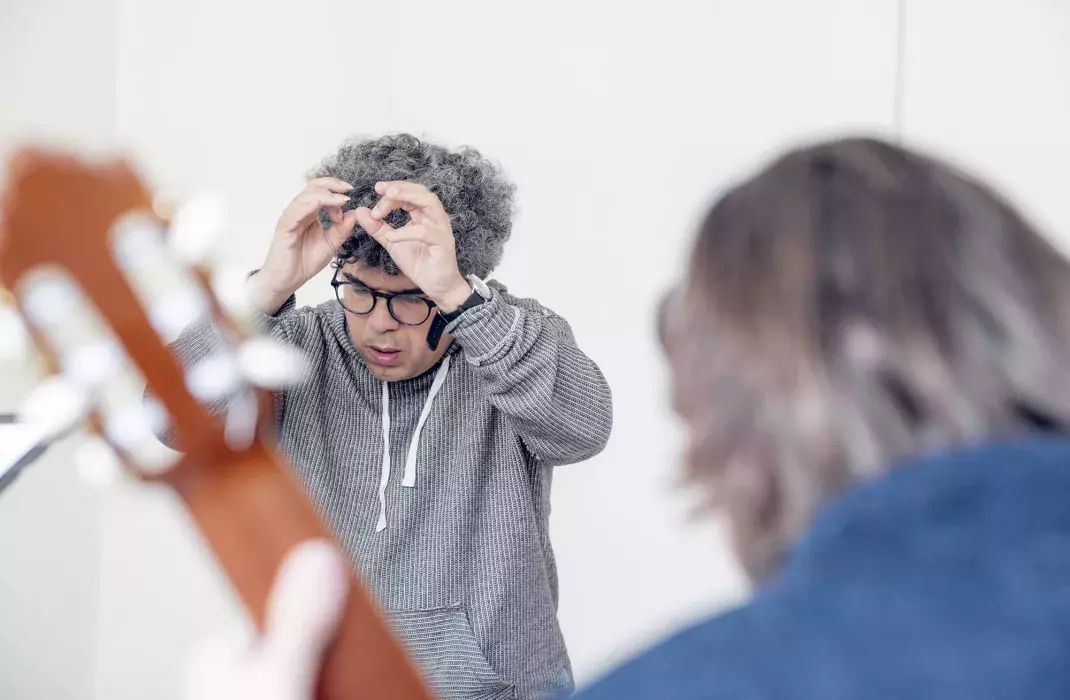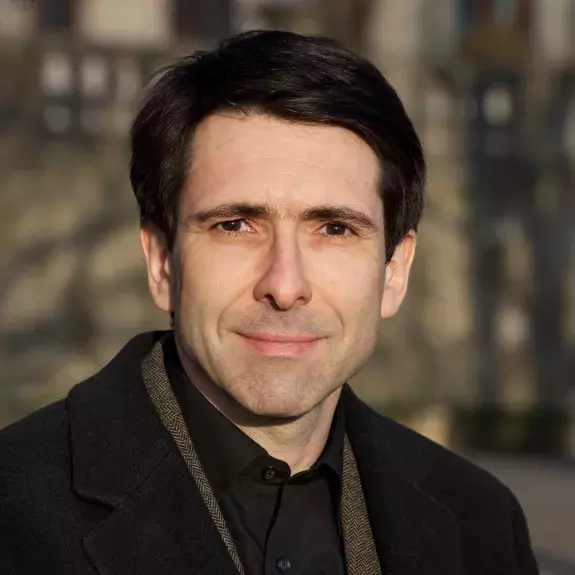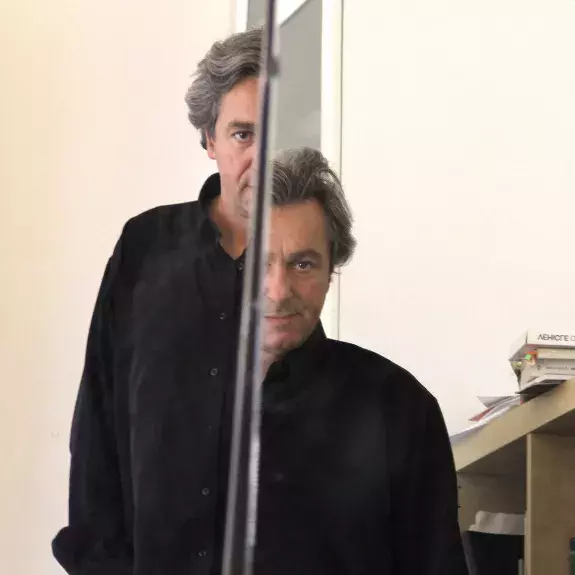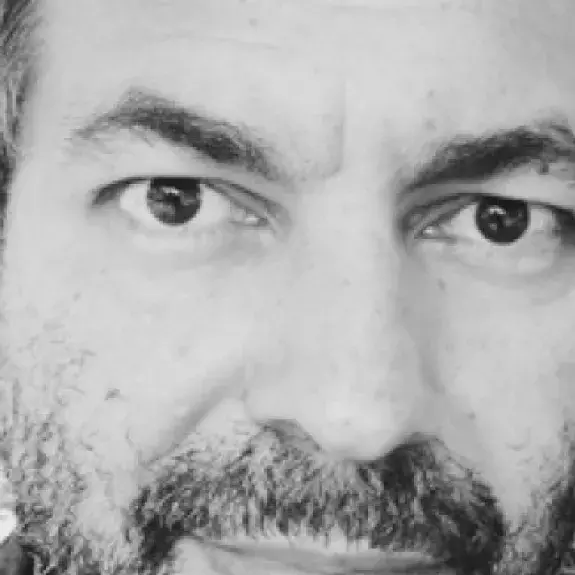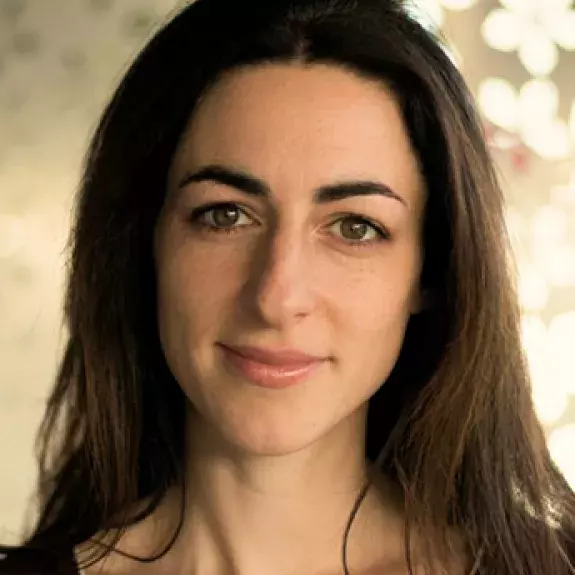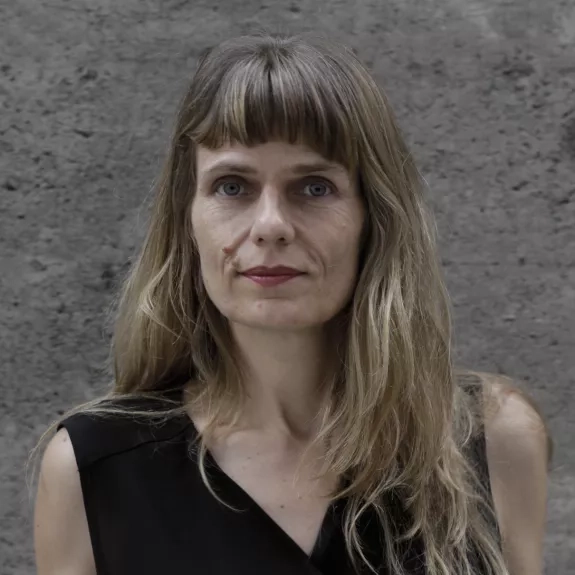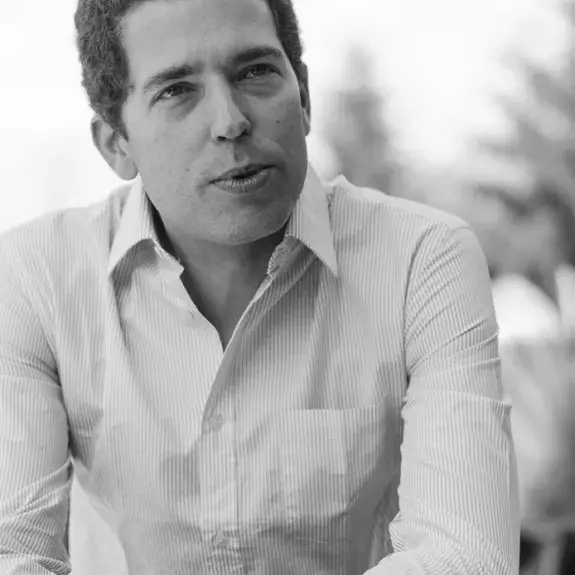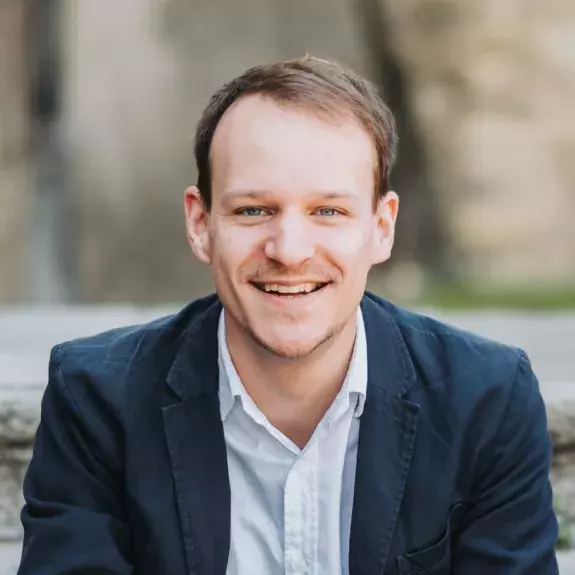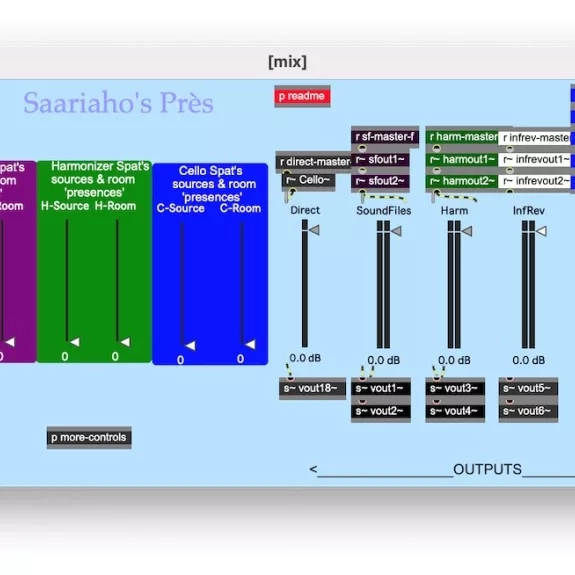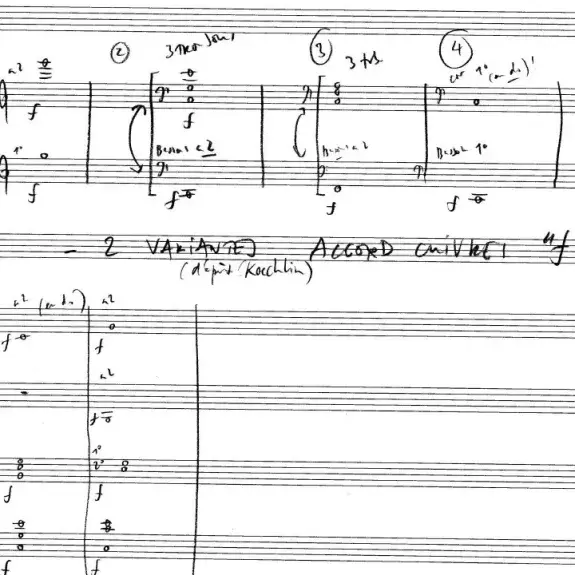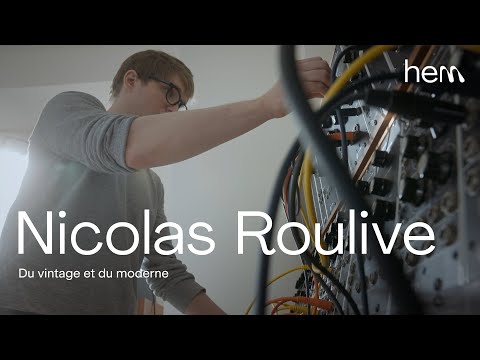Nicolas
Bolens
Professor of Counterpoint, 20th-Century Writing, and Practical Writing
En associant traditions et explorations nouvelles des matières sonores, les œuvres de Nicolas Bolens investissent l’espace en valorisant les éléments et les sujets qui se présentent à lui.
Combining traditions and new explorations of sound materials, the works of Nicolas Bolens invest in space by enhancing the elements and subjects that present themselves to him.
His music is regularly connected to other elements: texts, films, places, evocations... In each context, he seeks an authentic dramaturgy that promotes unprecedented settings.
For example, with the Batida ensemble, he imagined "Welcome to the Castle" (2017), three musical acts for musicians moving through the Allymes Castle near Amberieu-en-Bugey.
For the Gémeau Quartet, he wrote "La Ville Oblique" (2013), a string quartet conceived as a musical extension of the short film "Un Chien Andalou" by Dalí and Buñuel.
Written words, most often poetic, permeate his entire production. He has composed on poems by Celan, Sachs, Mallarmé, Char, Blok, Khayyam, Michaux, Éluard, Basho, Neruda, Rilke, Adonis, Shakespeare... These authors, from various times and origins, have led him to integrate many languages into his works, considering their sonic as well as semantic potentials.
Orchestration also holds an important place in his work, rethinking the instrumentation of certain past works. In 2018, he re-orchestrated "Lieder eines fahrenden Gesellen" and the 4th Symphony by Gustav Mahler for the Lemanic Modern Ensemble under the direction of conductor Pierre Bleuse.
Commissioned by the association Ouverture Opera, his recent rewriting of Mozart's "The Magic Flute" follows the same approach.
Nicolas Bolens has notably collaborated with the Batida ensemble, the Lemanic Modern Ensemble, the Swiss Chamber Soloists, the Ensemble Vocal de Lausanne, the Ensemble Vocal Polhymnia, the Ensemble Vortex, the Basler Madrigalisten, and the Ensemble Vocal Séquence...
Born in Geneva, he first studied piano at the Conservatoire de musique de Genève, then completed his training in the composition class of Jean Balissat. He further honed his skills with Rudolph Kelterborn, Klaus Huber, Edison Denisov, and Eric Gaudibert. He is the recipient of numerous composition prizes, including those from the Orchestre de Chambre de Lausanne (1993) and the Banque Cantonale Neuchâteloise (2002), as well as a scholarship from the Leenaards Foundation (1998).
An engaged pedagogue and artist, he teaches counterpoint, 20th-century writing, and composition at the Haute école de musique de Genève, where he has been the head of the Composition and Theory Department from 2015 to 2024. He is also involved in several institutions related to musical creation in Switzerland, including the Swiss Musicians Association, the Archipel Festival Association, the Nicati-de-Luze Foundation, and the Artistic Council of the Geneva Competition.
Learn more about Nicolas Bolens
Luis
Naon
Professor of Electroacoustic Composition - Mixed Composition
Born in La Plata, Argentina, in 1961, Luis Naon pursued his musical studies at the Universidad Nacional de La Plata, Universidad Católica Argentina in Buenos Aires, and later at the CNSM de Paris under the guidance of Guy Reibel, Laurent Cuniot, and Daniel Teruggi. He also studied with Sergio Ortega and Horacio Vaggione. Since 1991, he has been a professor of Composition and New Technologies at the Conservatoire National Supérieur de Musique de Paris. Additionally, he taught composition at ESMUC (Barcelona) from 2003 to 2008 and has been a professor of electroacoustics at the HEM de Genève since 2006.
From what could be considered his first work, "Final del Juego" for septet and magnetic tape (premiered at Studio 105 of Radio France in 1983), Naon has sought to implement this dual relationship (between America and Europe, between instruments and electronics).
He has been awarded the UNESCO International Composers Tribune in 1990 and 1996 (for "Tango del desamparo" and "Speculorum Memoria"), the Fondo Nacional de las Artes (for "Reflets"), the TRINAC Prize from the International Music Council (for "Cinq personnages en quête de hauteur"), the Olympia Composition Prize (for "Ombre de l'ombre"), and the Municipal Prize of the City of Buenos Aires in 1991 and 1995 (for "Speculorum Memoria"). He was nominated for the "3rd Victoires de la Musique Classique" (for Sextuor ". "), "Prix Georges Enesco" from SACEM, and "Luis de Narváez" Prize from Caja de Granada for his String Quartet No. 2.
Naon collaborates with various ensembles and institutions such as the Ministry of Culture and Communication, Teatro Colón (Buenos Aires), Musée d’Art Contemporain du Mexique, Orchestre de la Seine-Saint-Denis, Ensemble TM+, Lémanic Modern Ensemble, Interface, Musique Oblique, Musée d’Histoire de Montreuil, Orchestre Philharmonique de Radio France, INA-GRM, IRCAM, Orchestre de Paris, Ensemble Contrechamps, Ensemble Diagonal, Ukho ensemble de Kiev, and in festivals like Musica Strasbourg, MANCA, Festival d'Aix en Provence, Festival Archipel, and Vivier de Montréal.
In 1989, Naon composed the music for the parade on the Champs-Elysées and Place de la Concorde commemorating the Bicentennial of the French Revolution. This parade was televised worldwide.
The cycle of 25 works "Urbana," initiated in 1991 and completed in 2013, crystallizes under this generic title through "Urbana" (1997). It includes 25 works ranging from acousmatic pieces to symphonic orchestra.
He composed the music for the show "Les Princesses" for the opening of the Théâtre-Auditorium de Poitiers in partnership with choreographer Odile Azagury. Nearly 3 hours of music ranging from solo electroacoustic (for choreographers Anna Ventura, Karine Saporta, or Dominique Boivin) to pieces for 15 instruments and electronics (for choreographers Carolyn Carlson, Héla Fatoumi, Blanca Li, etc.). This entire production is captured on a double CD under the Empreinte Digitale label.
Recent works include "Quebrada/Horizonte" for orchestra, "Pájaro al borde de la noche" for cello, electronics, and ensemble premiered at the recent Présences festivals of Radio France, "Ébano y Metal" for the Lemanic Modern Ensemble (Switzerland/France).
Other notable recent works include "Rastros" for the ensembles Stick & Bow and Paramirabo of Montreal (featured in a monographic concert and video recording) and his "String Quartet III" (premiered at the Evora Festival in 2021, then at Archipel 2022 and projection space of IRCAM in 2023).
His latest piece, "Fueye," concertino for bandoneon and ensemble, was premiered by Juanjo Mosalini and the TM+ ensemble at the Maison de la Musique de Nanterre in October 2022, followed by performances at La Seine Musicale and Gennevilliers in May 2023.
Naon's works are published by Henry Lemoine, Gérard Billaudot, and Babelscores.
Learn more about Luis Naon.
Gilbert
Nouno
Head of the Centre de Musique Électroacoustique - Professor of Electronic Music - Multimedia Composition - Interactive Video Design - Internet Music - Interfaces, Digital Instrument Making & Immersive Systems - Concept & Creation, Open Space
Composer, sound artist, pedagogue, and researcher, Gilbert Nouno creates music that is highly in tune with visual arts and digital technologies. Curious about all forms of expression, he effortlessly crosses the boundaries between composition and improvisation. As a visual artist under the name Til Berg, he combines the synesthesia of sound arts with other media. Using music and sounds, he generates abstract and minimalist visuals with traditional and digital media such as video and lithography.
Gilbert Nouno's collaborations are marked by aesthetic plurality with many artists such as Pierre Boulez and the Berlin Philharmonic Orchestra, George Benjamin and the London Sinfonietta, Jonathan Harvey and the Arditti Quartet, saxophonist Steve Coleman, and flutist Magic Malik...
A laureate of the Villa Kujoyama in Kyoto in 2007, and the Villa Medici, Académie de France in Rome in 2011-2012, Gilbert Nouno joined the Centre de musique électroacoustique (CME) of the Haute école de musique de Genève as its head, teaches composition at the Royal College of Music in London, and is a visiting professor invited by the DAAD in Detmold (Germany). He teaches digital sound arts at Goldsmiths, University of London, where he is also a guest researcher, and live electronics & computer music design at Ircam.
Learn more about Gilbert Nouno
Charlotte
Perrey Beaude
Professor of Writing Practice - Cadence Writing - Music Theory
Charlotte Perrey began her musical studies with piano, quickly developing a strong inclination for improvisation and composition.
After studying in advanced mathematics classes, she fully devoted herself to music and specialized in writing under the guidance of Stéphane Delplace. She continued her studies at the Conservatoire National Supérieur de Paris, where she earned First Prizes in Harmony, Counterpoint, 20th-21st Century Writing, Fugue and Forms, as well as the Marcel Dautremer Prize. She studied notably with Jean-François Zygel, Thierry Escaich, and Marc-André Dalbavie.
She currently teaches at the Haute école de musique de Lausanne and the Haute école de musique de Genève.
Nicolas
Rabaeus
Professeur de composition à l'image - musique et cinéma
Born in Geneva on 6 May 1984, Nicolas Rabaeus is a Swiss composer specialising in music for moving images. He mainly creates his music by recording and synthesising instruments and objects in his studio in Geneva, which he then combines with other musicians and ensembles.
Classically and jazz trained, he is equally comfortable with an orchestra in a concert hall as he is creating experimental textures with a modular synthesiser, or even with a guitar playing pop songs. This horizontal approach to music is his signature and helps him find a unique sound for each score.
His music has won several awards, including the Swiss Film Award (2023, for Foudre), the Colombier-Dompierre Award in Montreal (2023, for Foudre), and the Kinotavr Award in Sochi (2015, for Le syndrome de Petrushka).
Over the past fifteen years, he has worked on more than fifty projects with European and Swiss filmmakers.
Katharina
Rosenberger
Professor of composition
The works of composer Katharina Rosenberger take listeners to unknown places. Born in Zurich in 1971, the artist takes an interdisciplinary approach and uses unusual combinations. Her works draw on artistic fields and media such as video, visual arts and theatre. Her sound art and sound sculptures challenge our listening habits and draw attention to the way we perceive music and works of art.
Katharina Rosenberger studied at the prestigious Berklee College of Music in Boston, the Royal Academy of Music in London and Columbia University in New York. Since 2018, she has been a professor at the University of California, San Diego, where she previously taught composition and sound art. In 2021, she was appointed professor of composition in Lübeck. In 2019, Katharina Rosenberger received the prestigious Guggenheim Fellowship.
Katharina Rosenberger's works have received numerous awards; her project ‘VIVA VOCE’ was supported by the Federal Office of Culture and her album ‘TEXTUREN’, performed by the New York ensemble Wet Ink, received the prestigious Copland Recording Grant and the Deutsche Schallplattenkritik prize. Katharina Rosenberger's works can be discovered at international festivals. Attending a live performance is an experience that leaves a lasting impression on the senses.
Rodolphe
Schacher
Professor of Writing Practice - Analysis - Harmony - Counterpoint
Franco-Swiss composer and pianist Rodolphe Schacher was born in France in 1973. Schacher pursued his musical studies in Paris, Geneva, and Zurich, under the guidance of Michael Jarrell, Thierry Escaich, Gerald Bennett, and Ulrich Koella.
He has been awarded five first prizes (harmony, counterpoint, Renaissance counterpoint, fugue and forms, and 20th-century music) at the CNSM in Paris and received the composition and theory diploma with honors, as well as the concert diploma in chamber music from the Zurich University of the Arts.
Alongside his artistic activities, Schacher teaches analysis and writing at the Haute école de musique de Genève, writing at the Haute école de musique de Lausanne, and taught composition until June 2015 at the Zurich University of the Arts.
Antoine
Schneider
Professor of Practical Writing - Contrepoint
After studying violin and musicology in Geneva, Antoine Schneider furthered his musical theory education in Zurich with Burkhard Kinzler and Andreas Nick. He also trained in musical direction, piano, and baroque violin.
He is currently a professor of solfège and counterpoint at the Haute école de musique de Genève and the Haute école des arts de Berne, as well as a professor of musical training at the ESM Bourgogne-Franche-Comté (Early Music Department).
In his teaching, he specializes in the practices of musical improvisation during the Renaissance period. He is regularly invited to give masterclasses across Europe and collaborates with Jean-Yves Haymoz, Barnabé Janin (CNSMD Lyon), and the Helicona project. He is the co-responsible for the website Super librum cantare (www.superlibrum.com).







